-
Posts
818 -
Joined
-
Last visited
Content Type
Profiles
Forums
Gallery
Events
Posts posted by woodrat
-
-
4 hours ago, mtaylor said:
Sails will also hide a lot of the detail of the interior. Maybe reefed or partially reefed so the interior is visable?
Mark, there were no reef points in these vessels. It was either furled or unfurled
1 hour ago, Louie da fly said:I see you've got the yards supported off-centre. This has been an issue I've been thinking about for quite a while for my own model. Do you have any reason for doing it this way - and do you think this would affect the performance and distribution of forces around the masts?
I have thought a lot on this, the yard (peciae antennarum) consists of two parts the upper portion or penna and the lower or carra. From my reading, the carra is always shorter than the penna. This is, I believe, to facilitate tacking or wearing during which the end of the carra must pass in FRONT of the mast base and so, if the carra is too long (equal in length to the penna), this manoeuvre becomes impossible. Hence, it appears that the yard is slung off-centre. The extension to the penna that I have put on to enlarge the sail exaggerates this. The forward mainsail is signicantly larger than the aft mizzen sail.
In regard to the sails, I think a quartering breeze would be OK.
3 hours ago, Mark Pearse said:Do you have an idea how heavy the rigging blocks would be?
I dont know about the weight. It would vary according to the size of the vessel but mediaeval blocks tended to be large. Especially the upper halliard blocks. Double blocks were in-line and so look much heavier than they are.
Cheers
Dick
-
Thanks Steven and Carl and all others for the likes. I have largely completed the running rigging and all that now remains is to decide on the sails. Should I leave it with bare yards or bend sails which may obscure a lot of detail in the rigging or maybe not. I have a cunning plan to do the sails in Silkspan to reproduce the bellying of the sails ( see my carrack build for a similar technique).
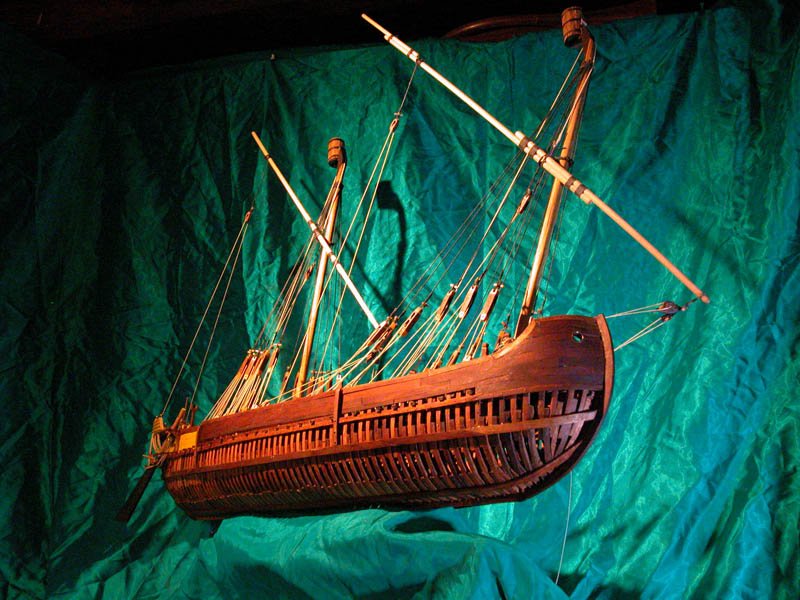
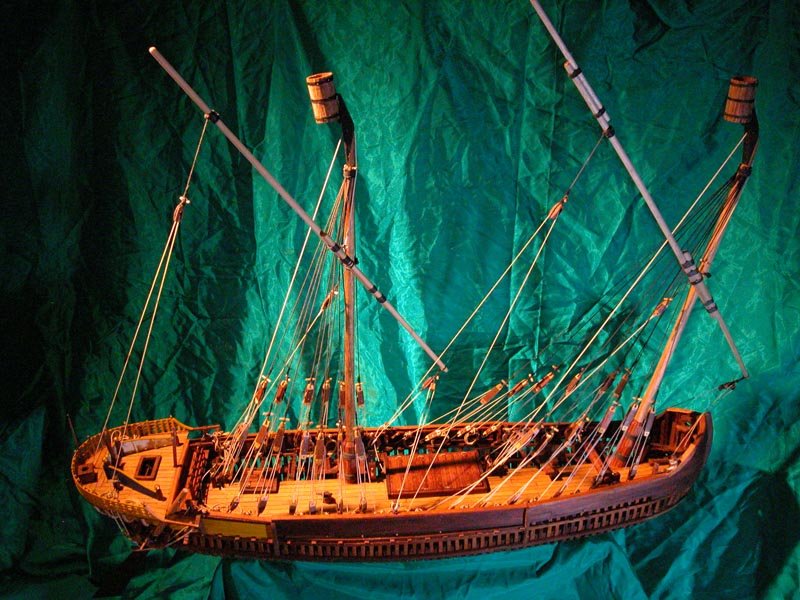
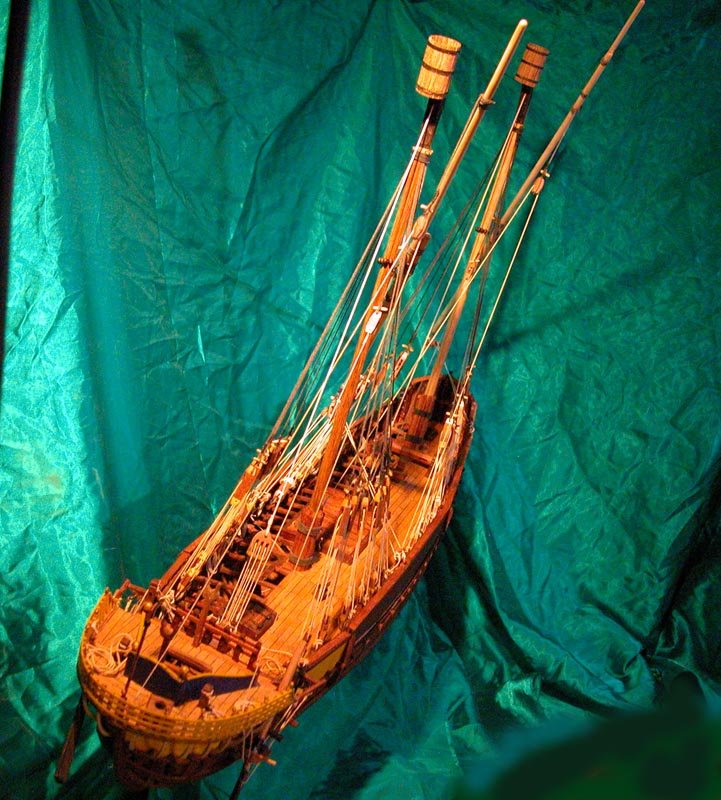


Cheers
Dick
- tadheus, Binho, Roger Pellett and 16 others
-
 19
19
-
Folks, the standing rigging is complete and ,I hope, is close to what the original looked like. I wasn't sure how neatly mediaeval sailors coiled their ropes but I am sure they were ship-proud like most sailors.
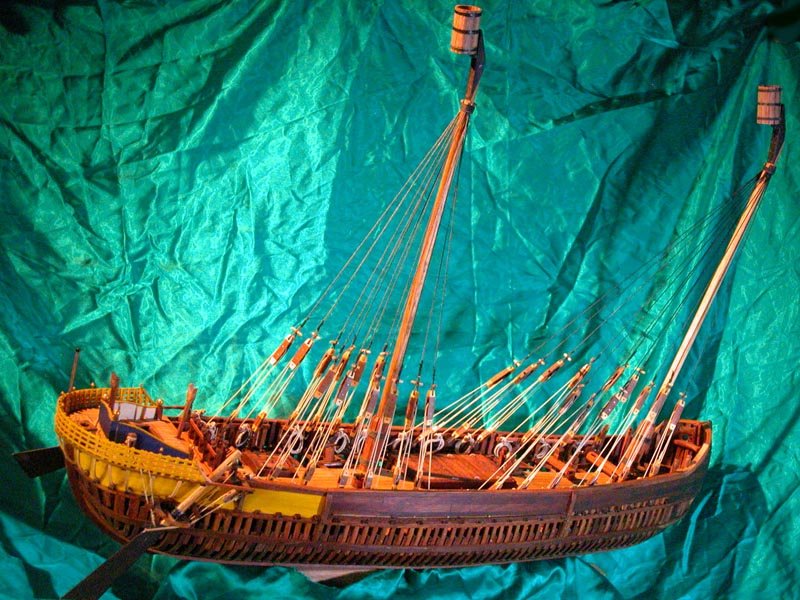
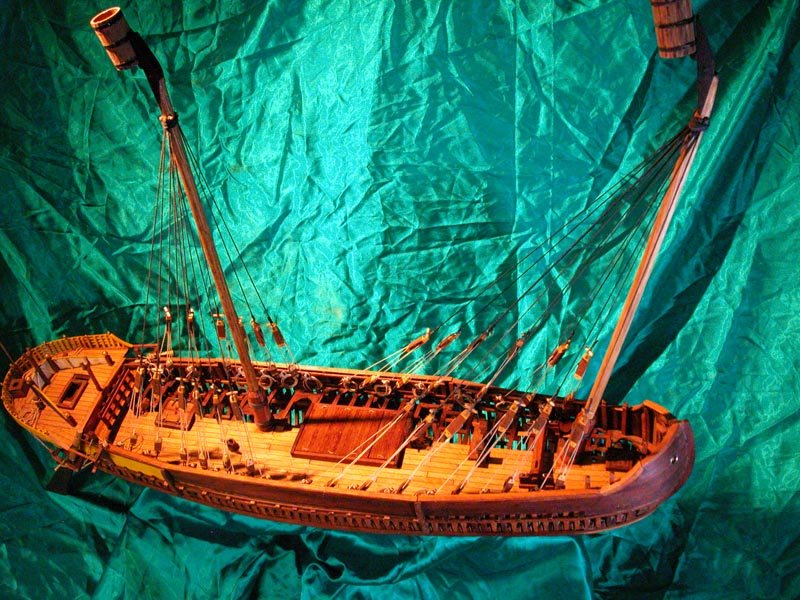
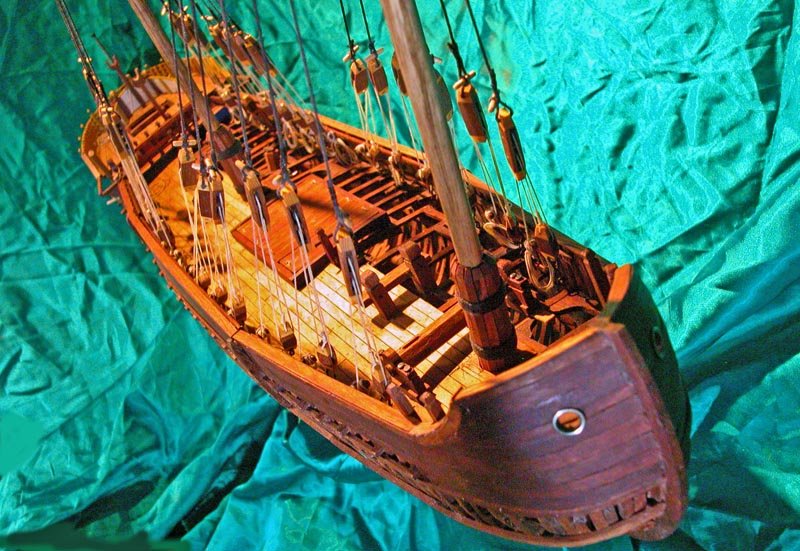
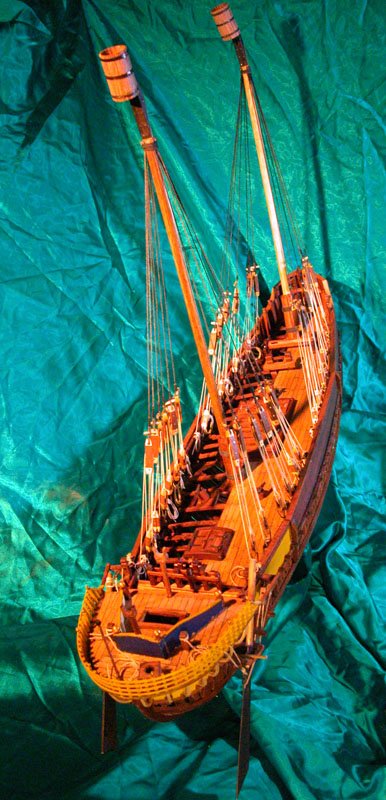
Cheers
Dick
- Mark Pearse, davyboy, popash42 and 10 others
-
 13
13
-
-
At the helpful suggestion of prof. Mauro Bondioli, I have changed the quarterdeck rail from neo-classical kitsch to something more in keeping with the era.


Dick
-
The construction of the main (forward) and mizzen (aft) yards.
Each yard was in two pieces the upper yard was the penna and was significantly longer than the lower yard, called the carra (also car, carium : Jal Glossaire nautique). The two pieces were fitted together with a curved recess carved into the penna and the two pieces lashed together. The ensemble was called the peciae antennarum (Pecia = piece + antenna = mast) This type of yard is seen in modern dhows and similar vessels.
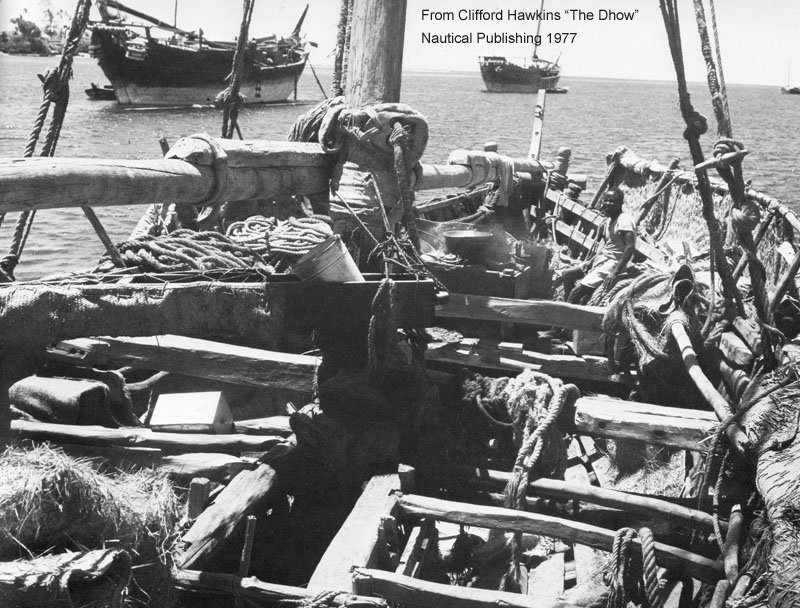


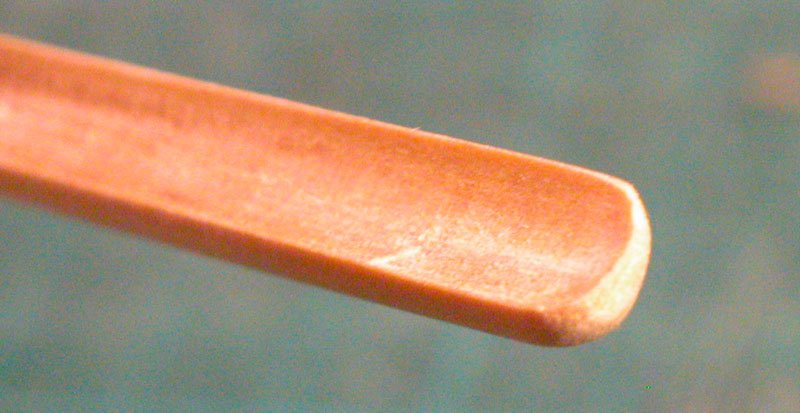

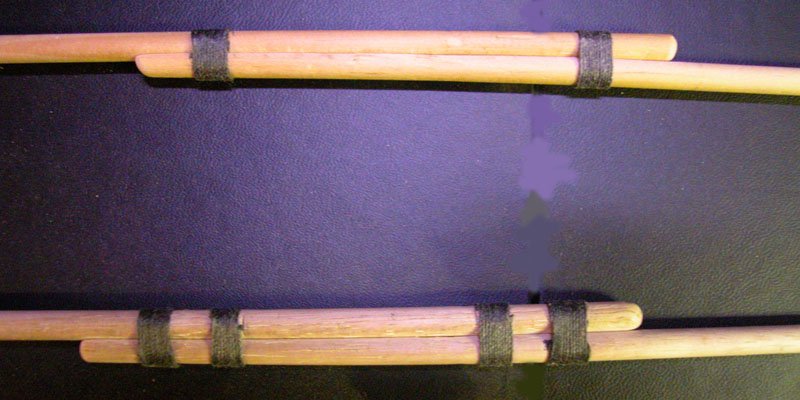
Cheers
Dick
-
-
-
Thanks, Tovabe and a Happy New Year.
I have now nearly completed an earlier venetian round ship of circa 1300 which may interest you:
Cheers
Dick
-
-
Thanks Steven and Lupus Niger.
I have been busy making blocks for the shrouds. The mediaeval blocks are somewhat different from those of later centuries . As a model I have used the pulleys from the Mataro nao combined with pulleys seen on Carpaccio's paintings. The double blocks for the shroud pendants are in-line rather than side -by-side. Also the mediaeval blocks were often quite sizeable.
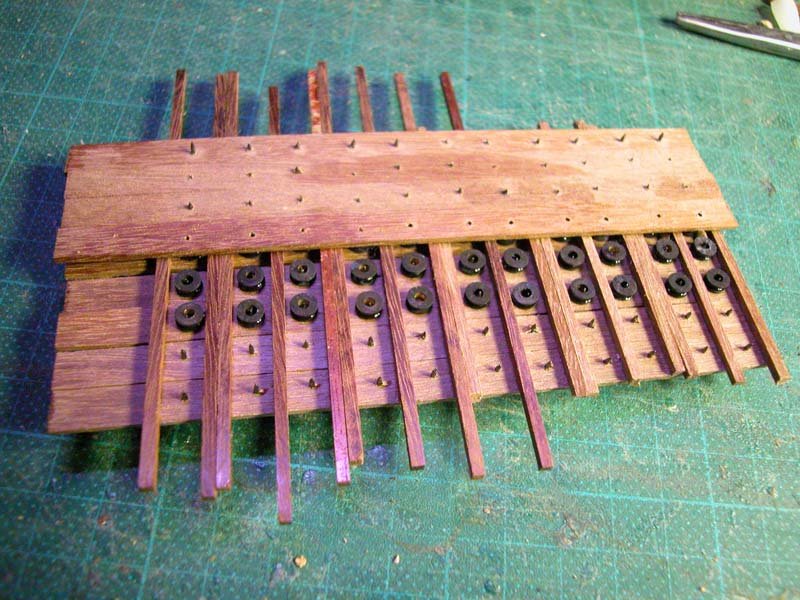


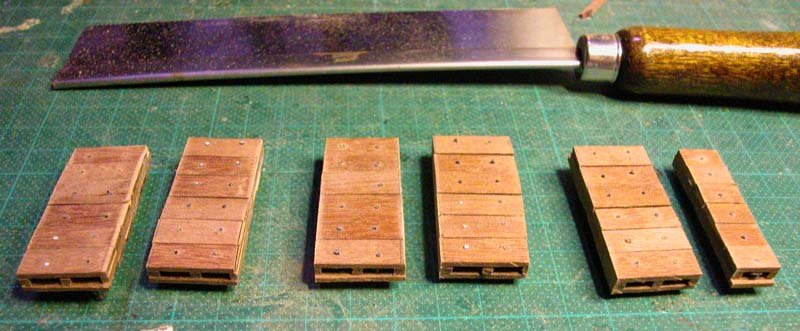
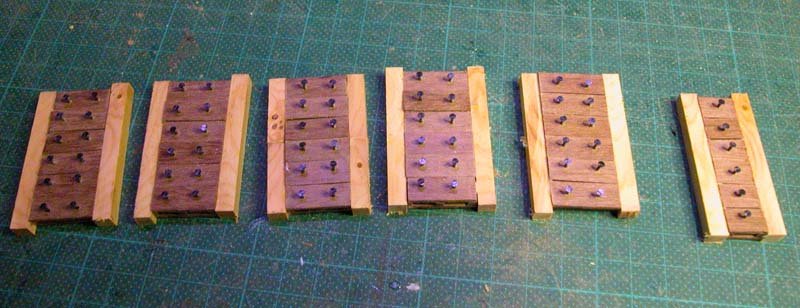
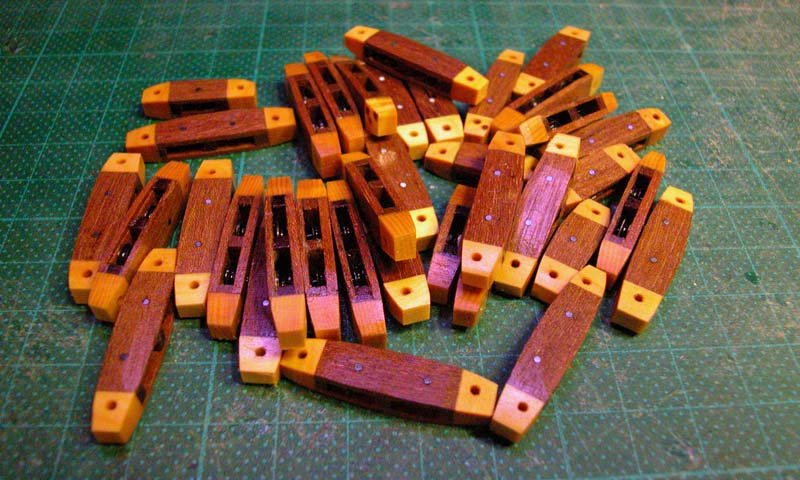
Now to make some dozens of toggles....
Merry Xmas
Dick🎅
- tarbrush, usedtosail, Siggi52 and 9 others
-
 12
12
-
The mast is stepped. Note that in round ships with latin rig the masts are sloped forward the main (forward) mast more so than the mizzen (after mast). Long staves which are chamfered as are barrel staves are used to wedge the mast into the mast partners. Then the staves are woolded to the mast . Note that these staves project much higher above the deck thean those in later ships such as carracks. Perhaps this is necessary to compensate for the lack of a forestay in latin rig.
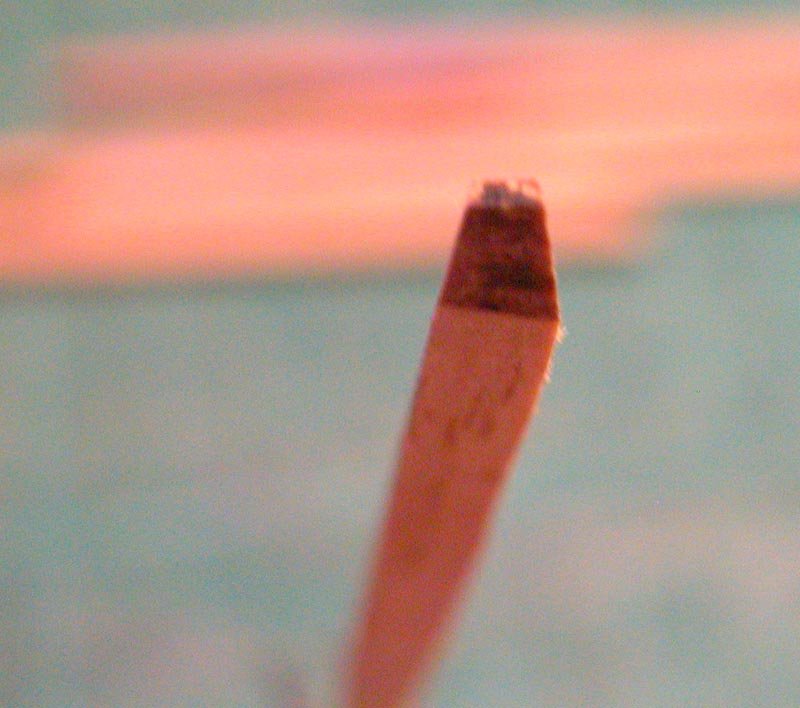

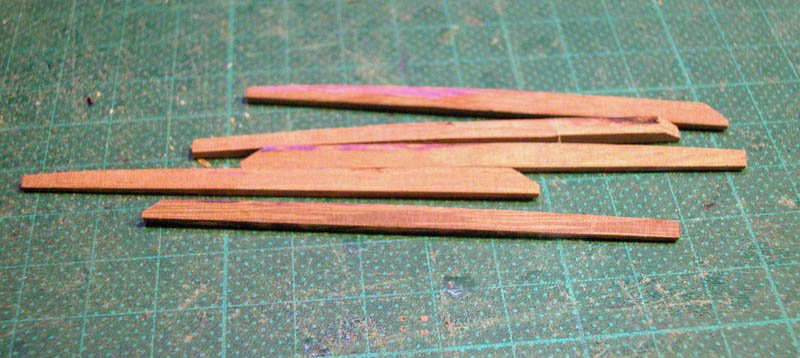
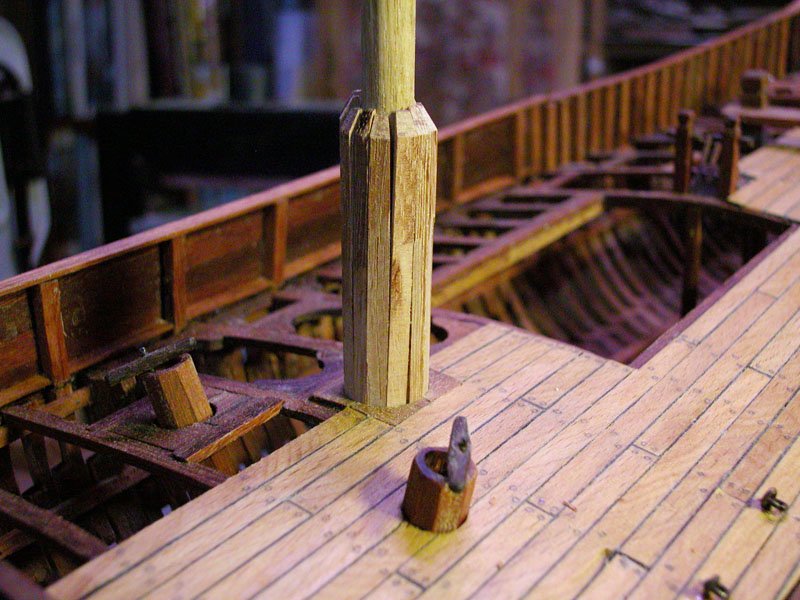
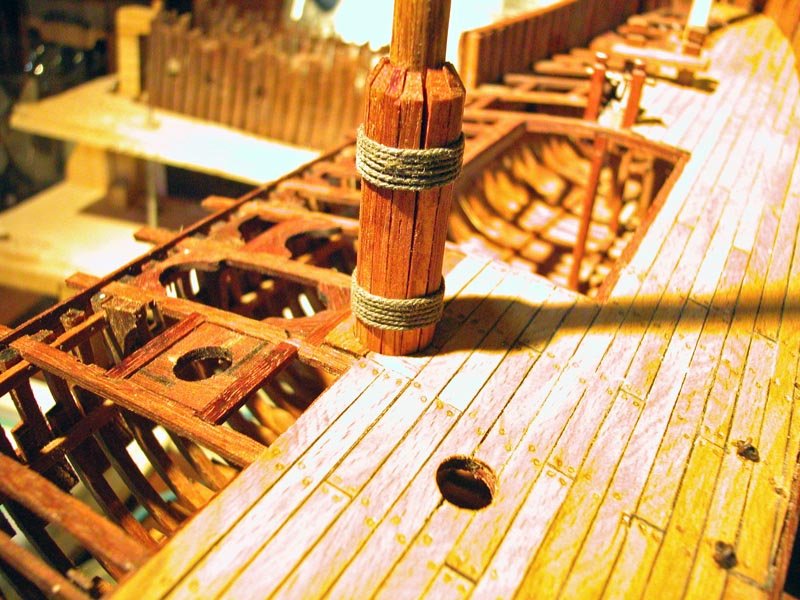
Cheers
Dick
-
-
Just a question for the sea-lawyers out there. If an individual uses a copyrighted book of plans e.eg Anatomy of the ship, and from them constructs a 3D CAD virtual model AND uses this to produce a kit for sale. Does the author of the original book of plans have rights and is the kit producer in breach of IP.
Just askin' because there are people using this site who are doing this for profit
Dick
-
Thanks, Steven. The following shows the masts. I have estimated that the lengths of the masts is about equal to the length of keel as judged by looking at many pictures. The main (forward) mast is longer than the mizzen (rear) mast but, as the main mast is more tilted forward than the mizzen, the height above deck of the colzexe (calcet) and its attached crows nest is the same in both masts.
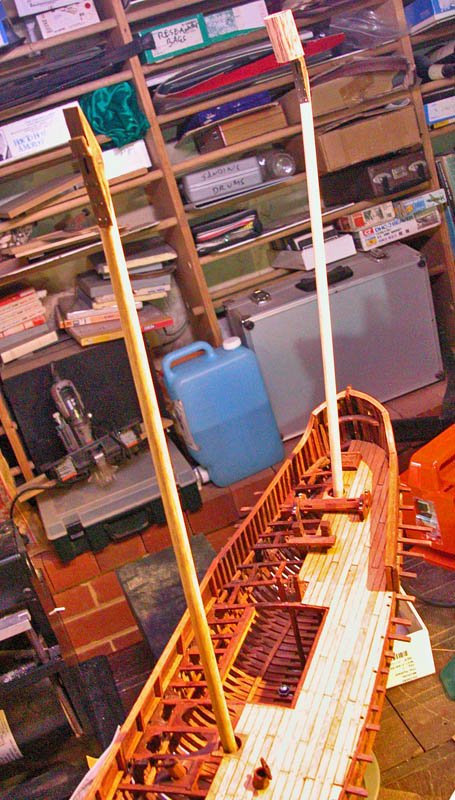
The following shows the constructof the colzexe to match the Zibaldoni da Canale illustration
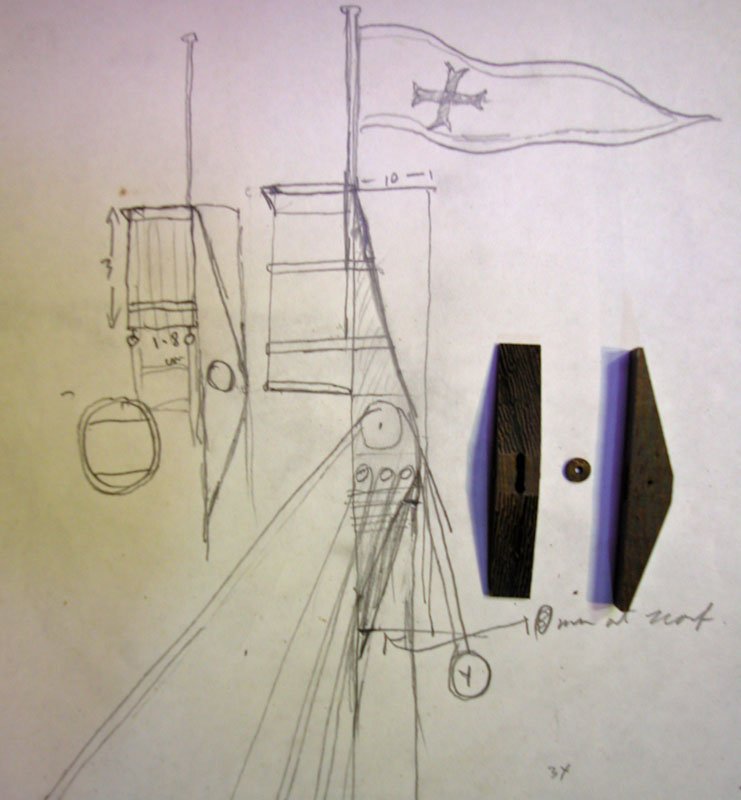


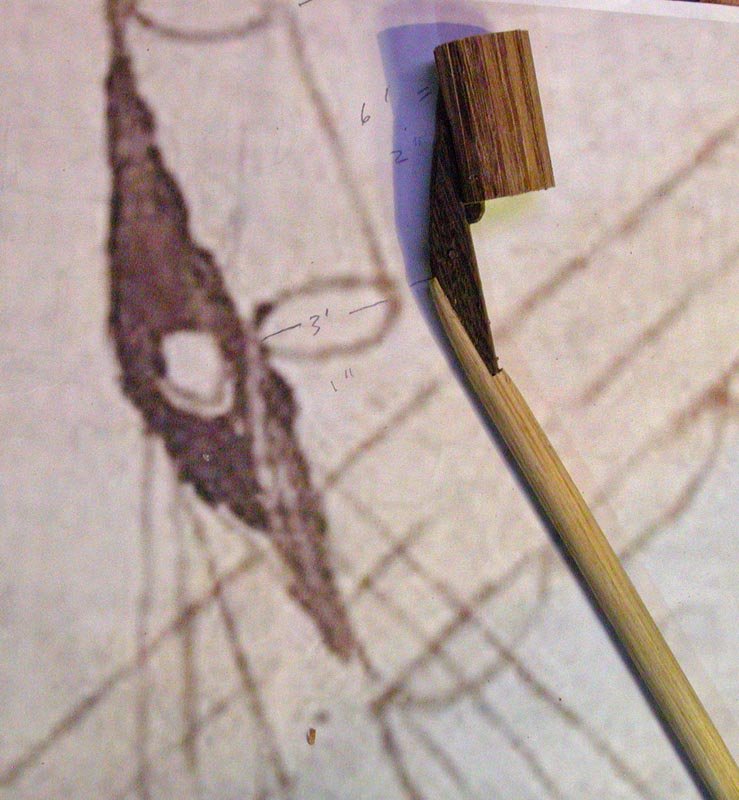
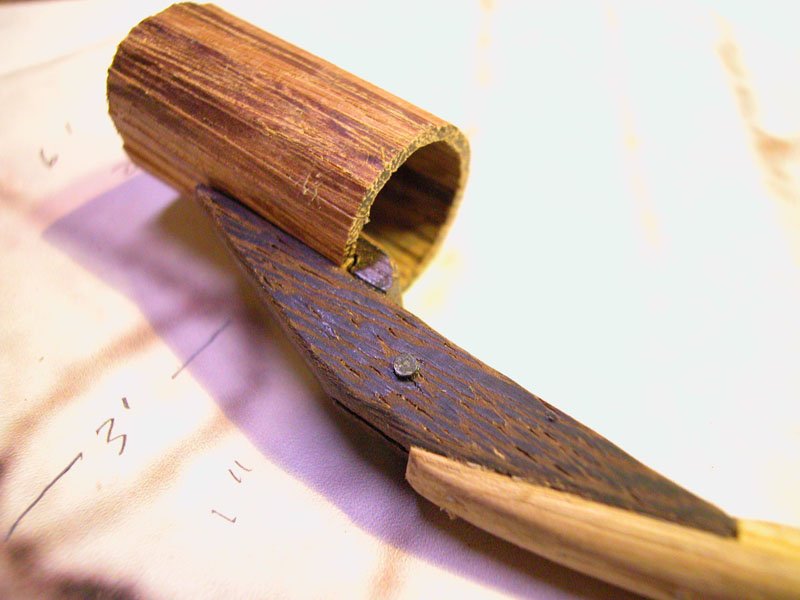
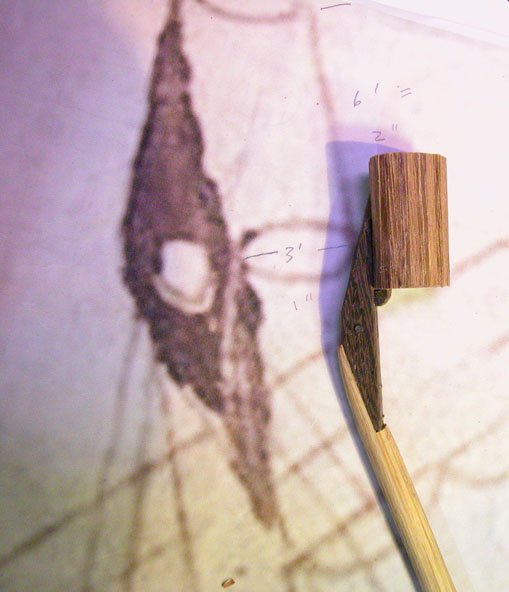
cheers
Dick
- Louie da fly, cog, popash42 and 5 others
-
 8
8
-
The hull is substantially complete now. The quarter rudders are now shipped. The starboard rudder is in use but the port rudder is not in use and has been retracted using the rudder lift and has been lashed onto one of the through-beams.

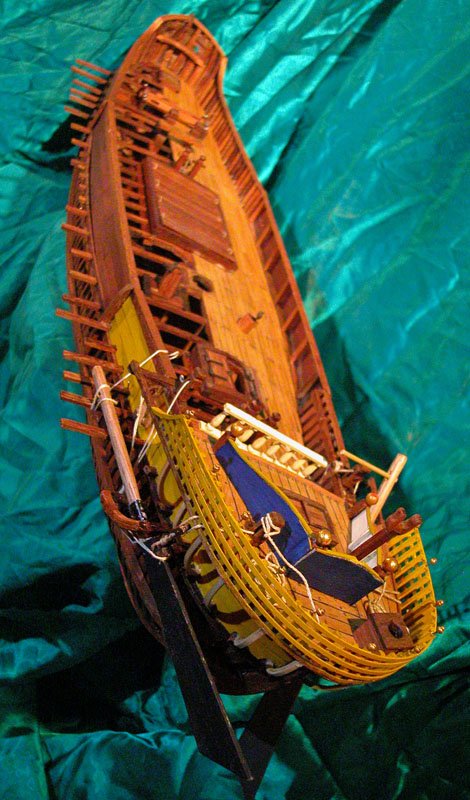
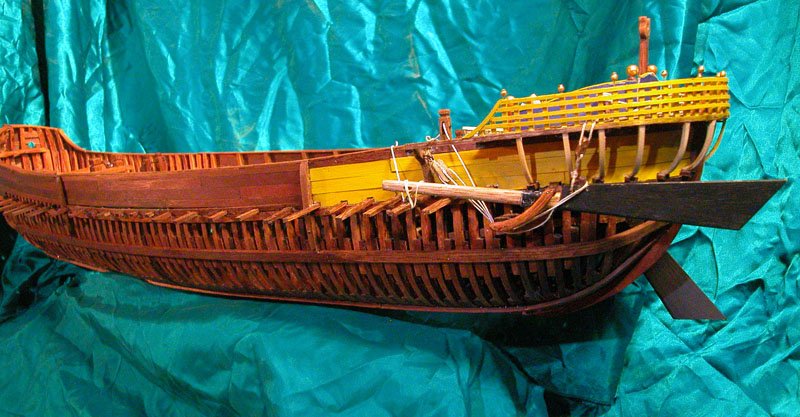
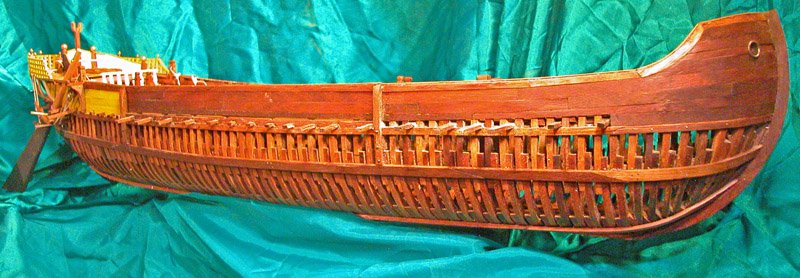
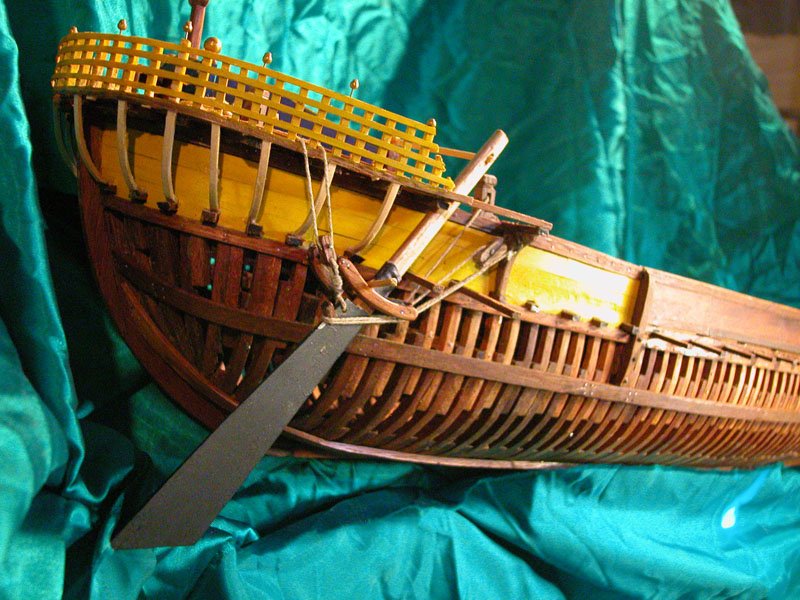
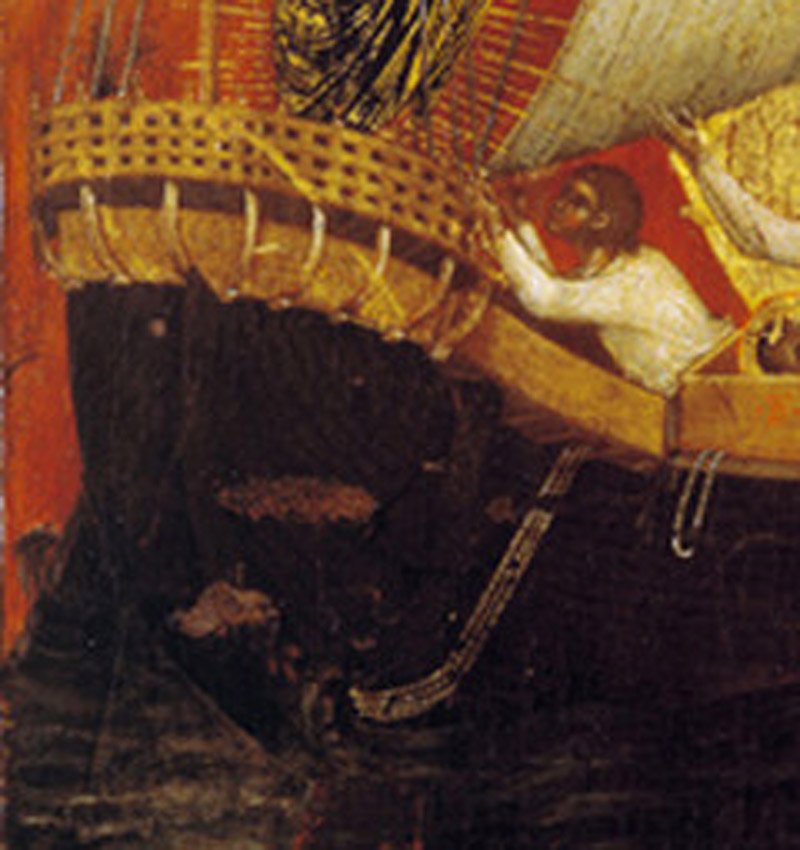
Cheers
Dick
- Schrader, Mark Pearse, jgodsey and 10 others
-
 13
13
-
Thanks for the pic, Steven, great detail in the rigging.
Here is a couple of pics of the sternshowing the Lego lad in a more useful position. Note the crutch for the mizzen yard
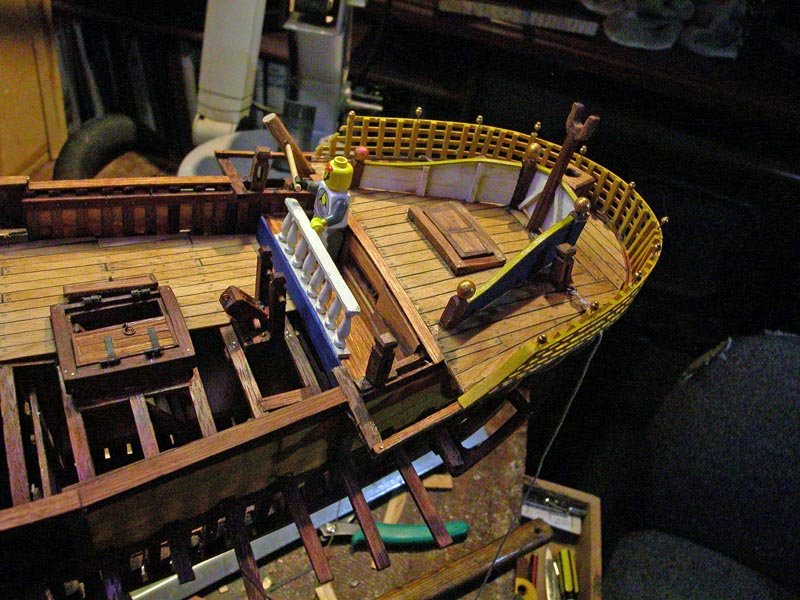
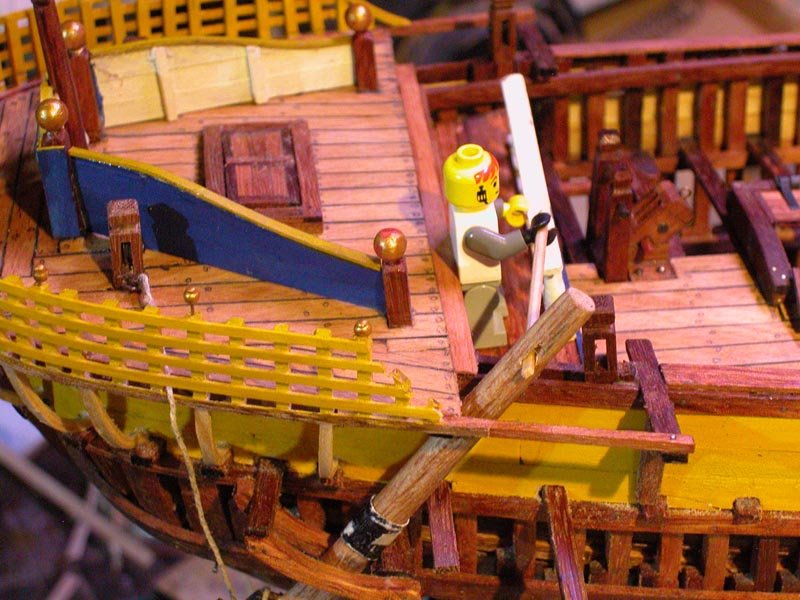
The wooden structure shielding the helmsman is seen in a number of illustrations of round ship.
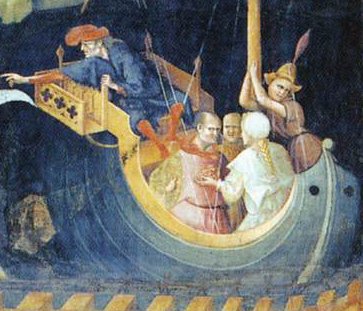 Dick
Dick
-
13 hours ago, Matle said:
I’ve been contemplating building a 16th century carvel ship, but with the rate they are currently uncovering new wrecks and how they were constructed my model would be built on obsolete information by the time I finished..
Go for it, Matie! All you can do is the best you can. Halfway through my build of a round ship C13 a Black Sea wreck of the same era was was found. Fortunately, as I had based my build on solid archaeological evidence and not on speculation, the find largely confirmed my interpretation. In any case there was such a wide variation in local practice that you probably wont go far wrong. Cheers.
Dick
- mtaylor, thibaultron and druxey
-
 3
3
-
6 minutes ago, cog said:
Dick,
I just wonder, wouldn't it be more logical that depending on the lee side the rudder on that side would be used, as the other one wouldn't give enough steerage way, Which in turn would imply druxey's rower (nice touch by the way) wouldn't be able to row, as the horizontal bar would be much, much shorter
Quite right. This is not the final tiller length. They will be shorter. But in the case of running before the wind, both rudders would be in use, either with two helmsmen or with one in the centre. The contemporary illustrations are not helpful. Also, Lego men's shoulders don't abduct away from the side!
10 hours ago, Louie da fly said:So the colzhexe is the same thing as the calcet on the previous page of this build log?
Steven
Yes but I believe the construction was different in venetian naves to the byzantine hence I am using the venetian name.
Dick
-
-
-
On 10/2/2019 at 11:30 PM, Binho said:
Hey Dick, I was catching up on what I had missed on Steven’s Dromon build and saw you had been looking for Julian Whitewright’s thesis on lateen rigs in antiquity. If you are still looking for it, here it is: https://www.academia.edu/562936/Maritime_Technological_Change_in_the_Ancient_World_The_invention_of_the_lateen_sail._Volume_One
- Alberto
Thanks. Alberto, I have downloaded the thesis and have started to read it. I have thought about the design of the colzexe (venetian dialect) as shown in contemporary illustrations. This is the wooden module, scarfed to the top of the mast and which contains the halyard block and is the site of attachment of the crows nest. The following illustration from the Zibaldone da Canale document is the best available image and I intend to reproduce this in my model.
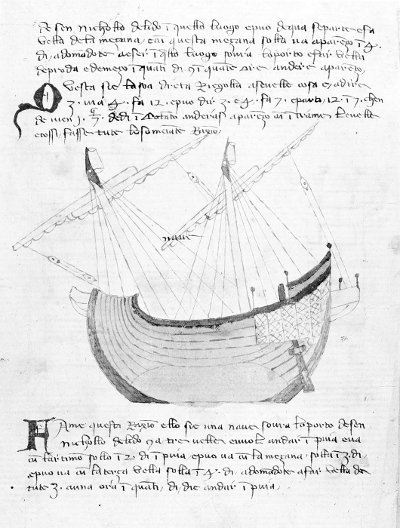

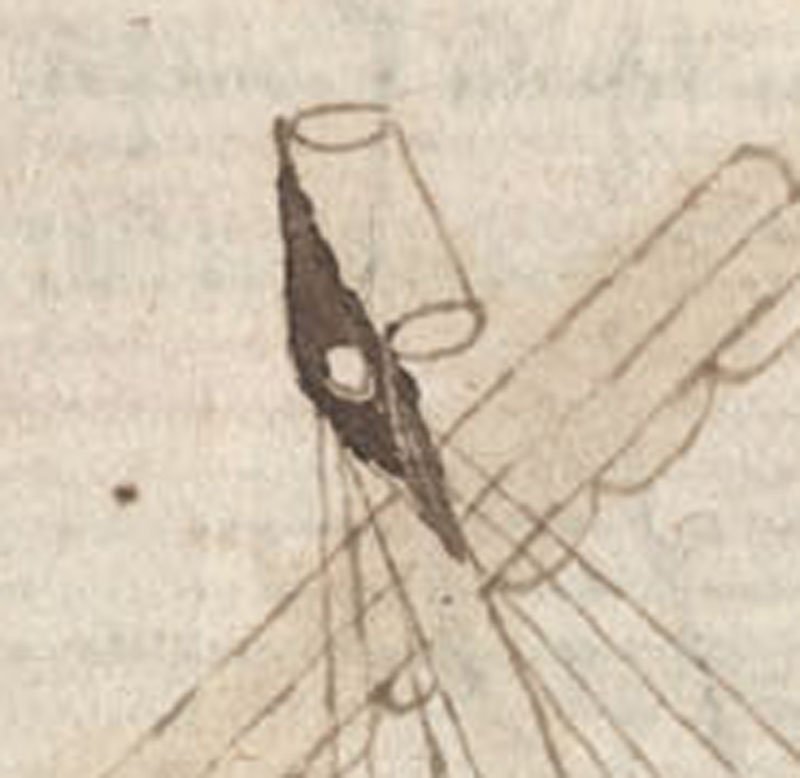
Dick
-
The decking largely completed and freshly oiled.
Dick
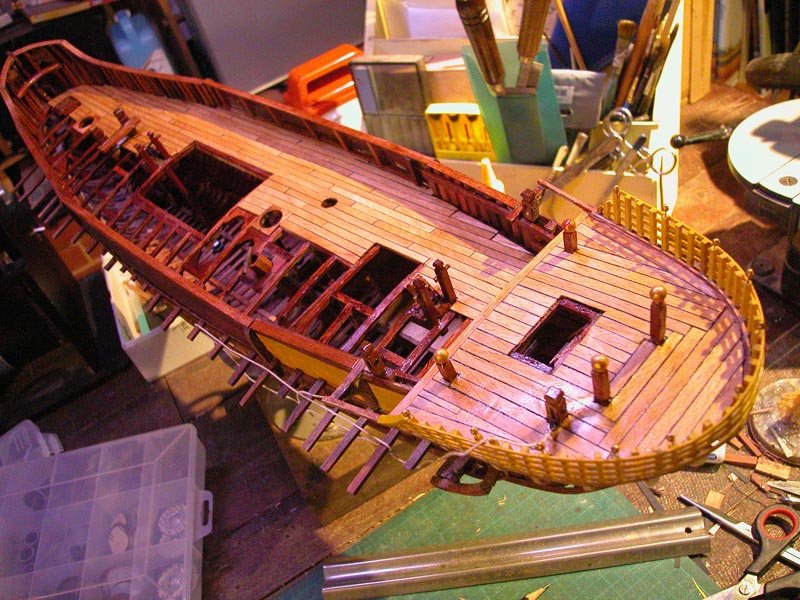
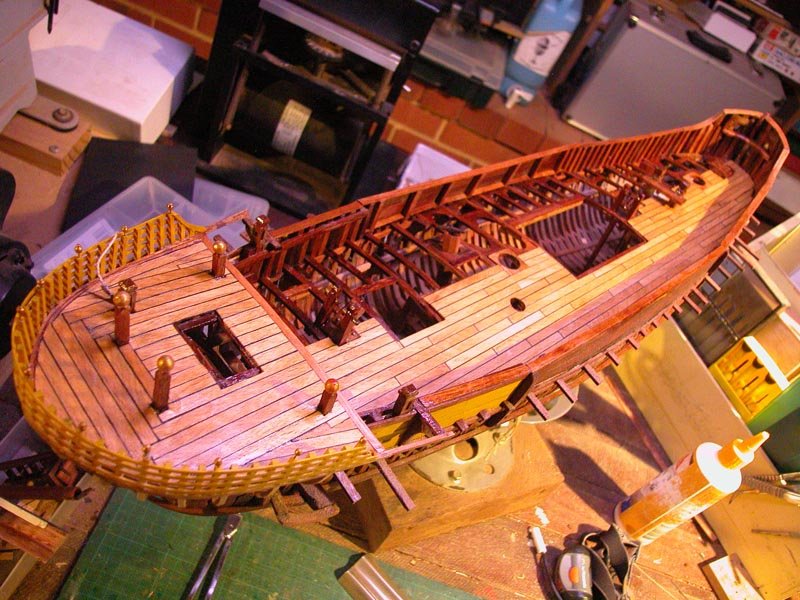
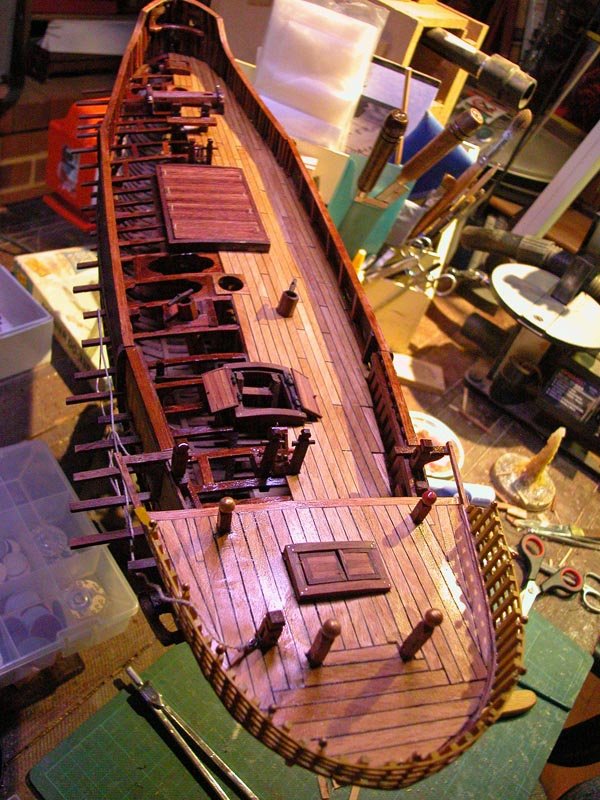
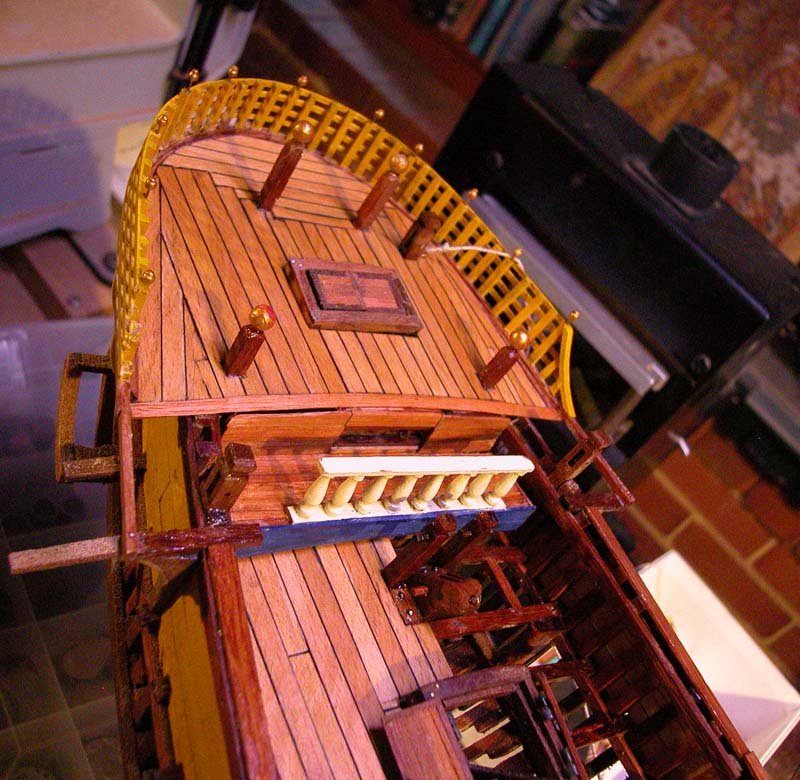
- popash42, druxey, GrandpaPhil and 8 others
-
 11
11
-
The steersman's walk. This area is for the steersman or steersmen to stand while managing the tiller(s) of the quarter-rudder(s). Amidship there is an area for seating, below which is the sliding panel to allow instructions to given to the steersman from the after-cabin. Access to the after-cabin is via a scuttle behind the steersman's seat.
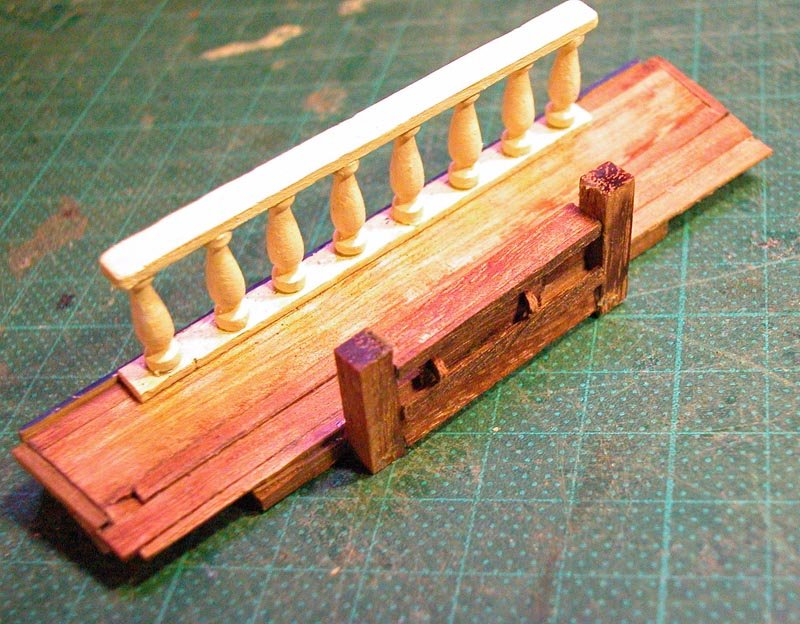
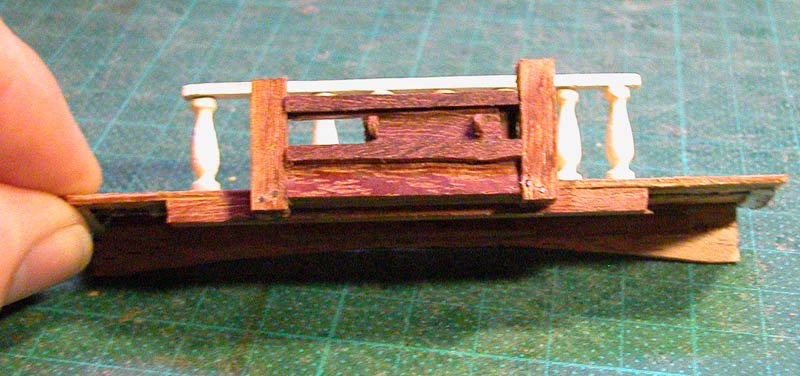

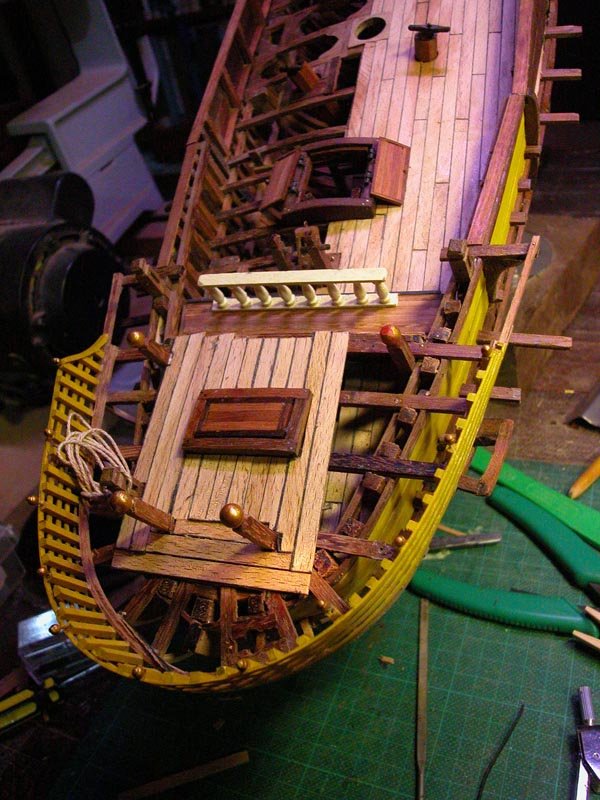

Dick


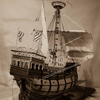
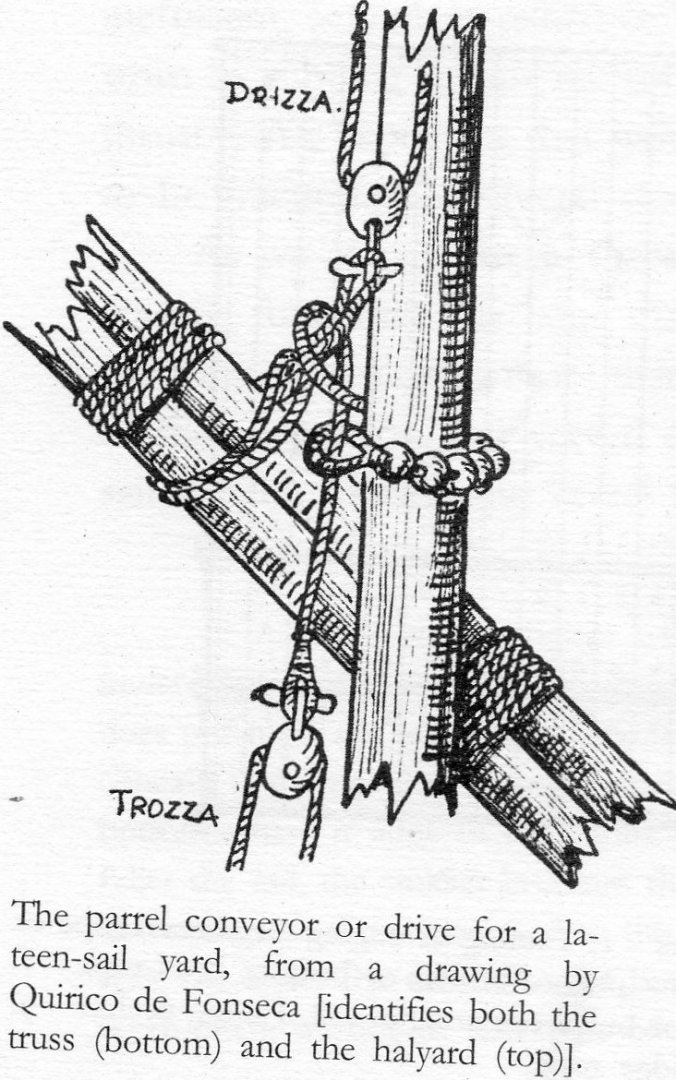
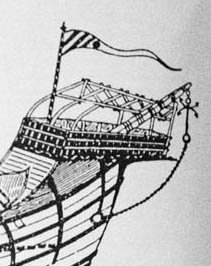

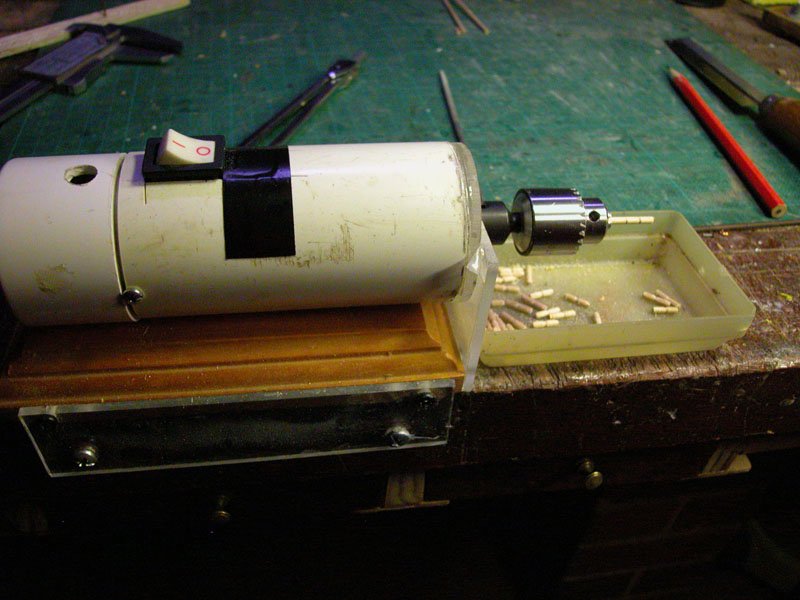

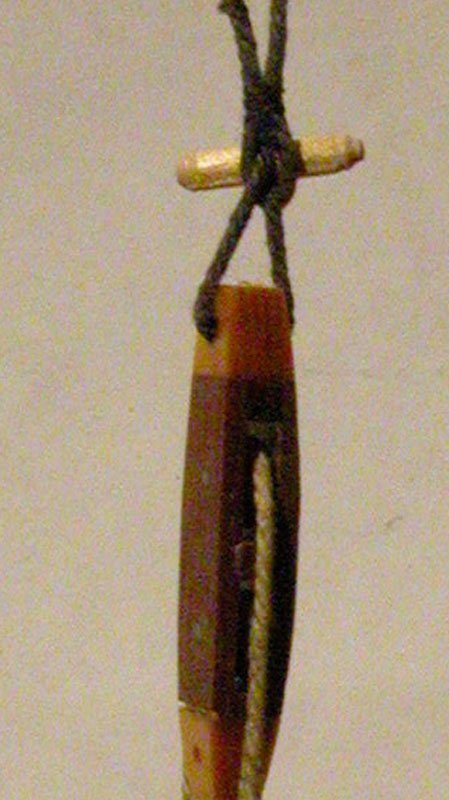
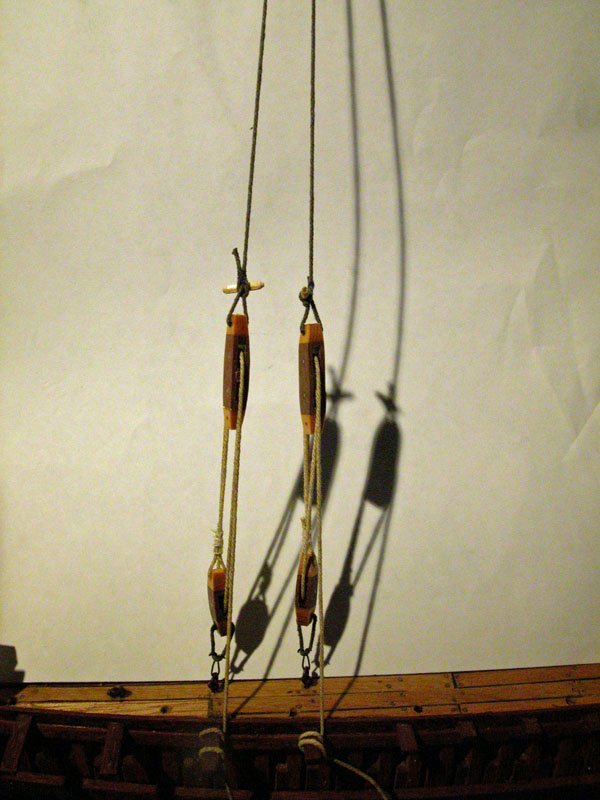

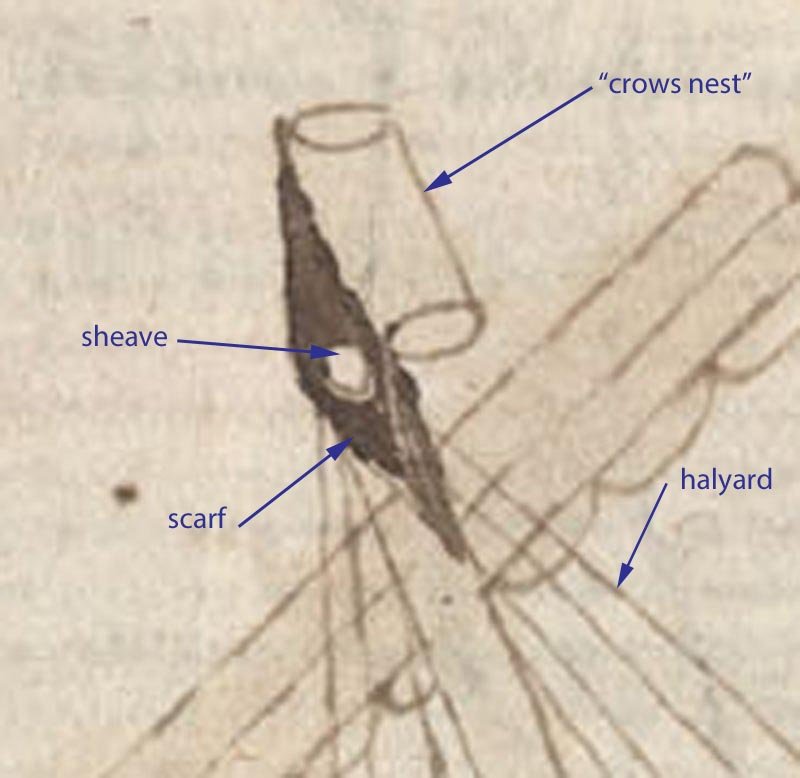

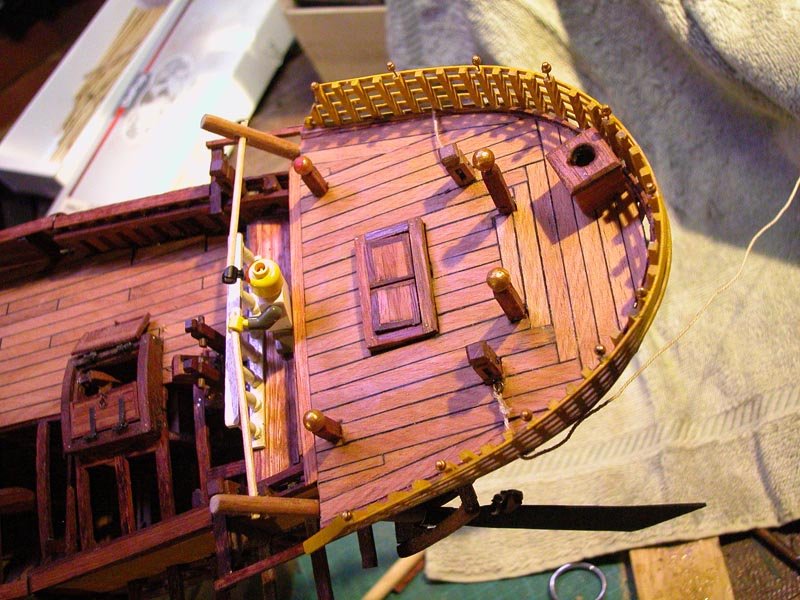

Venetian Round Ship c. 13th century by woodrat - FINISHED - 1:32 scale - fully framed
in - Subjects built Up to and including 1500 AD
Posted
I have fitted the rope Jacob's ladders for access to the "crow's nests". I have positioned them so that they would not foul the running rigging . This was before ratlines appeared on the shrouds, at least in the Mediterranean.
Cheers
Dick